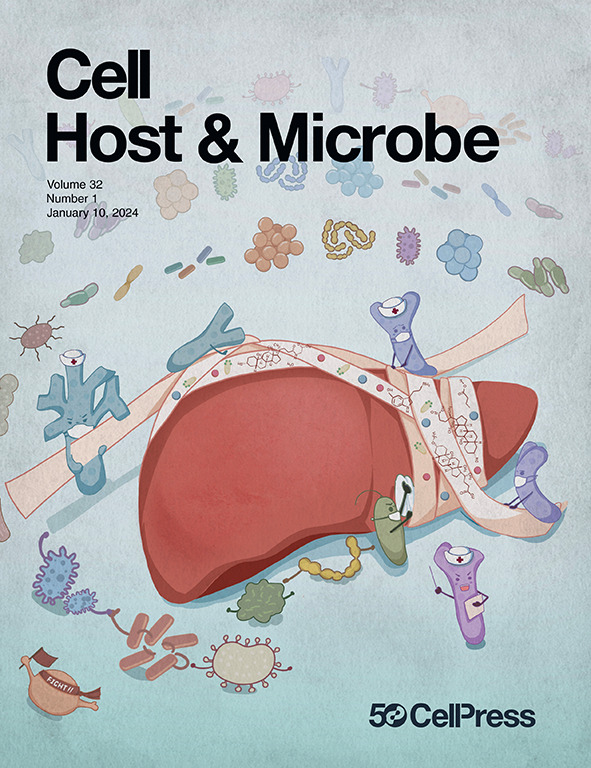Transcriptional repressor Capicua is a gatekeeper of cell-intrinsic interferon responses
IF 20.6
1区 医学
Q1 MICROBIOLOGY
引用次数: 0
Abstract
Early detection of viral infection and rapid activation of host antiviral defenses through transcriptional upregulation of interferons (IFNs) and IFN-stimulated genes (ISGs) are critical for controlling infection. However, aberrant production of IFN in the absence of viral infection leads to auto-inflammation and can be detrimental to the host. Here, we show that the DNA-binding transcriptional repressor complex composed of Capicua (CIC) and Ataxin-1 like (ATXN1L) binds to an 8-nucleotide motif near IFN and ISG promoters and prevents erroneous expression of inflammatory genes under homeostasis in humans and mice. By contrast, during respiratory viral infection, activation of the mitogen-activated protein kinase (MAPK) pathway results in rapid degradation of the CIC-ATXN1L complex, thereby relieving repression and allowing for robust induction of IFN and ISGs. Together, our studies define a new paradigm for host regulation of IFN and ISGs through the evolutionarily conserved CIC-ATXN1L transcriptional repressor complex during homeostasis and viral infection.

求助全文
约1分钟内获得全文
求助全文
来源期刊

Cell host & microbe
生物-微生物学
CiteScore
45.10
自引率
1.70%
发文量
201
审稿时长
4-8 weeks
期刊介绍:
Cell Host & Microbe is a scientific journal that was launched in March 2007. The journal aims to provide a platform for scientists to exchange ideas and concepts related to the study of microbes and their interaction with host organisms at a molecular, cellular, and immune level. It publishes novel findings on a wide range of microorganisms including bacteria, fungi, parasites, and viruses. The journal focuses on the interface between the microbe and its host, whether the host is a vertebrate, invertebrate, or plant, and whether the microbe is pathogenic, non-pathogenic, or commensal. The integrated study of microbes and their interactions with each other, their host, and the cellular environment they inhabit is a unifying theme of the journal. The published work in Cell Host & Microbe is expected to be of exceptional significance within its field and also of interest to researchers in other areas. In addition to primary research articles, the journal features expert analysis, commentary, and reviews on current topics of interest in the field.
 求助内容:
求助内容: 应助结果提醒方式:
应助结果提醒方式:


